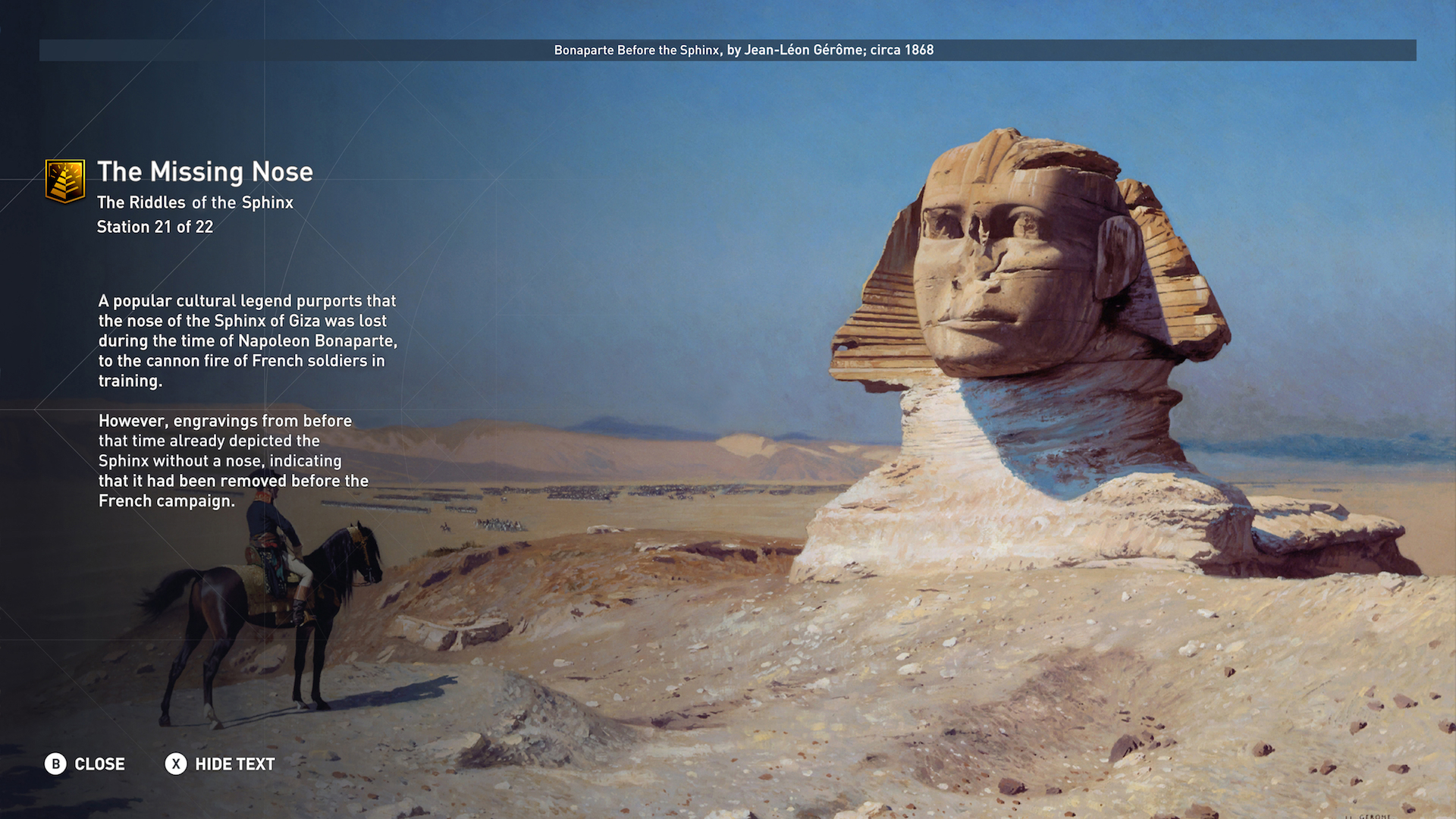When Maxime Durand heard the news on April 15th, Assassin’s Creed: Unity was the last thing on his mind. At first, he thought it was a joke, but when he realized that the cathedral of Notre-Dame de Paris was actually burning, he was at a loss for words.
Then he saw the reaction from the Assassin’s Creed community on social media sharing their love for the recreation of the cathedral and their experiences with the game.

Credit: Jade Henderson for EGM
“That was quite overwhelming, to see that people cared and knew and loved the history of a monument because they had played it in a video game,” said Durand, who works as franchise historian at Ubisoft Montreal. “It represents so much that [the cathedral] is worth saving, and if a video game can spark interest into caring about historic landmarks, I am just super happy about it.”
Since the original Assassin’s Creed released in 2007, the series has grown from an action-adventure game with a loose grip on history to one with such accurate historical representation that it’s being used as an educational tool in classrooms.
“The team on the first Assassin’s Creed already knew that they were creating something unique, something different that was unique to the market,” Durand said.
Assassin’s Creed was originally meant to be a new Prince of Persia, but when the team at Ubisoft realized that they had something special they made a shift. An open-world game in a historic setting with outsourced professional historians offering input was a new concept.
The first game was set in the Holy Land during the Third Crusade and offers a very loose depiction of the setting and historical actors of that era. The team’s primarily focused on creating an entertaining experience for players. Once work on Assassin’s Creed II began, however, Ubisoft knew they really had a chance to focus on the historical aspects of their games, and with this came the Animus Database. The database is a collection of short encyclopedia entries that tell players about people, landmarks, items and events that are encountered during the game.
“I was always shocked when I think about the time setting that they have decided to create,” Durand said. “Imagine creating the Italian Renaissance for a video game. That must have felt like the most absurd setting to choose for an action-adventure game.”

Credit: Ubisoft
At the time of the release of Assassin’s Creed II, pop culture wasn’t extremely aware of the historical events of the Italian Renaissance and characters like the Borgias. The Animus Database filled these gaps for players by giving more historically accurate pieces of information. The number of entries and the amount of information kept growing with each subsequent story about Ezio Auditore, the protagonist of Assassin’s Creed II.
For the third installment in the franchise, the Assassin’s Creed team wanted to tackle the American Revolution and continue to grow the significance that history played in their games.They soon realized that recreating the American Revolution while balancing accuracy and entertainment would be a complex task.
To reach their goals, they hired Durand, an expert in 18th century Colonial America.
“They wanted to really have someone full time on the floor, but also still to work with external consultants,” Durand said. “They wanted to have someone who would be always available for the team to ask questions and to feel comfortable with how the game-side dev looked.”

Credit: Ubisoft
With an in-house historian, the depth of historical accuracy seen in the games since Assassin’s Creed III has become even more robust, as did the research required.
Durand spends most of his available time researching and answering a variety of questions the development team may have.
“There is not a common day for a historian working on the Assassin’s Creed franchise,” Durand said. “One day you could very well be explaining historical characters during research that you are planning to present to the narrative team, and then maybe the next day, the animation team will call you and ask, ‘So, how do we salute in the 5th century BCE?’ Or ‘How do we marry people?’”
Durand isn’t doing this work alone. Ubisoft employs several historical consultants and professors to help with each game, as well as a dedicated research team for the entire series that’s based in Paris. Members of the development team will even conduct their own research to find answers to their questions.
When the idea for an Assassin’s Creed game begins, the research team starts with other ways the game’s historical setting is portrayed in other popular entertainment to spark the developer’s interests. After that Durand starts digging into historic books, monographies, journals and archives to be prepared for the in-depth questions that the development team will have for him.
“Pretty much all of the time that is available,” Durand said how much time he and the team dedicates to research. “Seriously, it is a lot. It is what we do here.”

Credit: Ubisoft
New developments in technology have also played a large part in the changes to Assassin’s Creed from game to game. Ubisoft can now create indoors and outdoors with better scale and players can experience and see more aspects of an era compared to earlier games.
One tool Ubisoft uses to do this is photogrammetry, which is the use of photographs to create maps, drawings, measurements, or 3D models of real-world objects or scenes. The Assassin’s Creed Origins team utilized photogrammetry to create textures with organic pieces like deserts and rocks, but the tool has become so effective that Ubisoft can use it in the game environment directly.
No matter how much effort the developers put into its history, in the end, Assassin’s Creed is an entertainment product first and foremost, and liberties need to be taken. Choosing between historical accuracy and fun gameplay will always be a matter of balance and it is never a clear line, but Durand believes that the extra details add believability even if they may go unnoticed by many.
“Sometimes there are details that people will never notice that I might have been working hours or weeks to get into the game and I feel quite good about these because I feel that they add to the believability of the whole universe,” Durand said. “They make it more credible. I think when you have a whole amount of real details of the past when they are poured into the game they make the game more interesting. Yes, you can still fight on a unicorn, but still.”

Credit: Ubisoft
As the games kept getting bigger and the research became more in-depth, the team at Ubisoft realized that an educational component to their games could be beneficial. The idea for an educational mode and the desire to do more was always in the minds of many people on the team. Ever since Durand joined Ubisoft he wanted to create something that could be used as an educational tool.
Durand was in luck.
Jean Guesdon, the creative director on Assassin’s Creed Origins and Assassin’s Creed IV: Black Flag, was also one of the people who always dreamed of creating a new experience out of Assassin’s Creed and reusing the environments to tell history and to make it accessible to non-gamers. The team also realized they had a player base that was intrigued by the historical accuracy in their games. After discussing it with Durand, Guesdon helped launch the production of a mode that would basically be a living digital museum.
“We decided that the Animus Database just wasn’t enough,” Durand said. “In addition to that, we had testimonies from teachers saying they were using Assassin’s Creed in their classrooms, but that they were struggling with the way the game is built for a classroom and with the age rating that was provided.”

Credit: Ubisoft
To create this new mode, Durand and others from Ubisoft went to educational conferences and met textbook editors to try and understand how to create a tool for in-school use. After listening and getting input from educators, they were ready to create their tool which would be introduced in Assassin’s Creed Origins.
The tool they created would come to be known as Discovery Tour.
In Discovery Tour mode, players can explore the world free from conflict and combat. While exploring, they can go through guided tours of different landmarks, locations, people and occupations.
Through the mode, Ubisoft aims to show that video games can help promote participation in the classroom, and help students express themselves by relating to the experience in front of them. Right now, Discovery Tour by Assassin’s Creed: Ancient Egypt—the standalone spin-off product—is being played by students, then their teachers asks questions and gives additional tasks. Students can take pictures by using the photo mode that is inside Discovery Tour to explain what they have seen and share with their classroom and peers.
“I think we are really just at the beginning of this new era of bringing games in classrooms that are triple-A quality and I just look forward to having more of these even in other subjects,” Durand said. “We are talking about history and archaeology with the Discovery Tour. We are talking about critical thinking. We are talking about some specific details, but there is so much more that we can do.”

Credit: Ubisoft
The new era of classrooms that Durand envisions could soon be a reality. Marc-André Éthier, a professor at the University of Montreal, has studied the use of the Discovery Tour in high school classrooms in Montreal. The study focused on short-term memorization of declarative knowledge compared to a traditional classroom. It was conducted in 2017 and 2018 with more than 320 students, ages 12 to 17, from nine secondary schools in Canada. The students were distributed into two separate equal-aged groups at each school. One group would be taught traditionally and the other would be self-taught with a virtual visit in Discovery Tour. The students were given a pre- and post-test to assess their direct knowledge before and after learning.
Éthier’s study found that although the use of video games alone in the classroom may not bring higher test scores when compared to a teacher-led course, the students who played the Discovery Tour left with more interest in the history of Egypt. According to teachers at the high schools, students seemed happy and motivated and could be heard talking about the experience outside of class.
“Students particularly appreciate seeing the monuments and being able to decide for themselves what to visit,” Éthier said. “They liked the experience, the freedom to visit and the opportunity to see the material culture and social practices they could not otherwise imagine.”
But for Durand and Ubisoft, higher test scores aren’t the only goal.
“I think if we can spark interest for people into history,” Durand said. “I think that is the big goal we have here.”
The effectiveness of the series’ dedication to history came to life on April 15th, the day the Notre-Dame de Paris cathedral was burning. Their players were turning to their game for solace and to memorialize the cathedral. The painstaking effort to recreate the cathedral and the history surrounding it allowed players to mourn its partial destruction. In turn, Ubisoft donated more than $500,000 to the restoration efforts and even made Assassin’s Creed Unity free to play on PC so everyone who wanted to could experience the cathedral in all its digital glory.
Just as millions of people visit the cathedral each year, millions of people play Assassin’s Creed, sparking more interest in the history behind whatever civilization they experiencing in each entry. Because of that, the Assassin’s Creed community responded with sadness and shock for a building that many of them had only experienced in a video game.
Header image: Assassin’s Creed Unity, Ubisoft

Jake is a new writer fresh out of college and an aspiring video game journalist from Columbus, Ohio interested in storytelling, music and game development. He has loved video games ever since his older brother handed him that unplugged controller. You can find him on twitter @jrahe6. Please reach out with any opportunities to jrahe6@gmail.com.